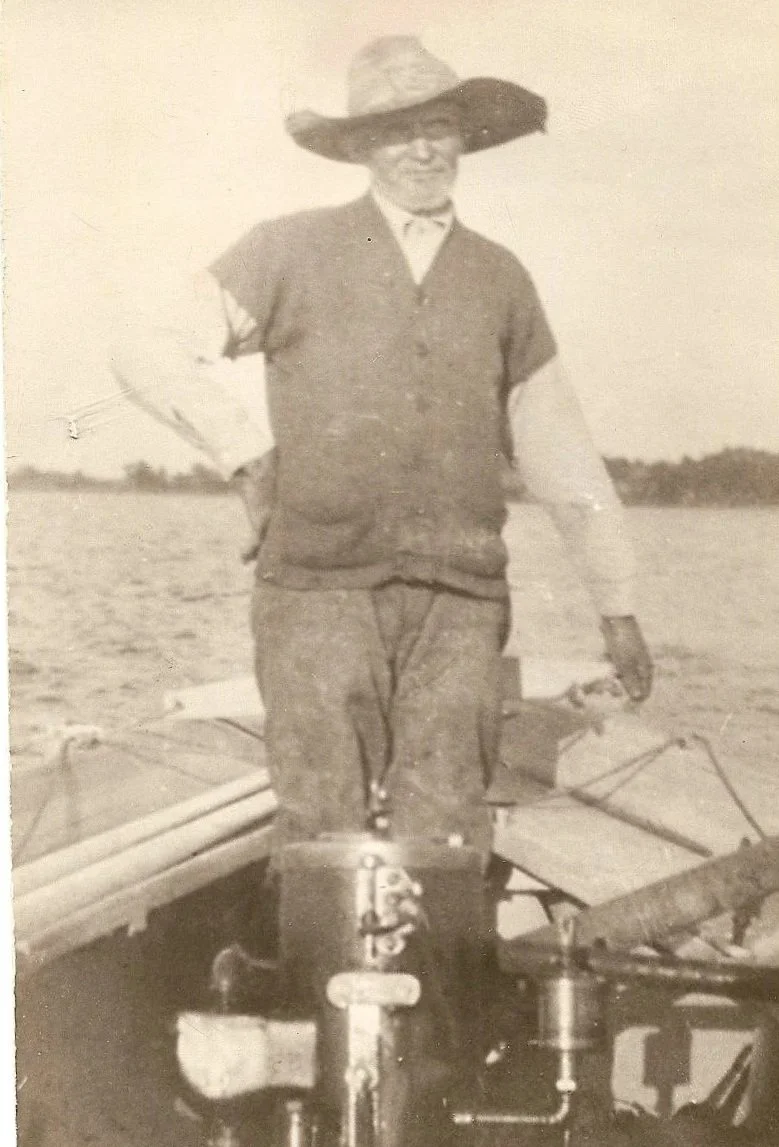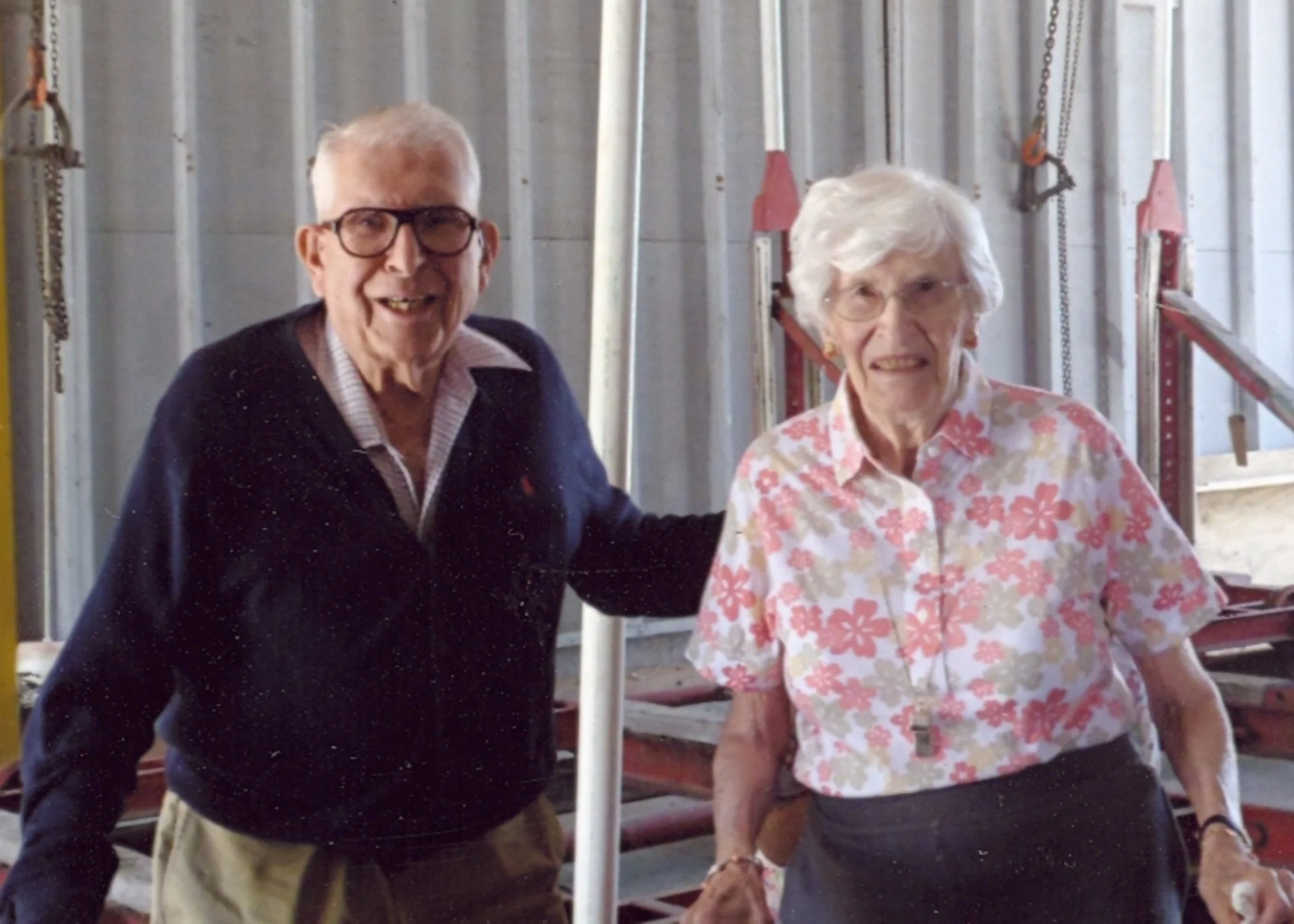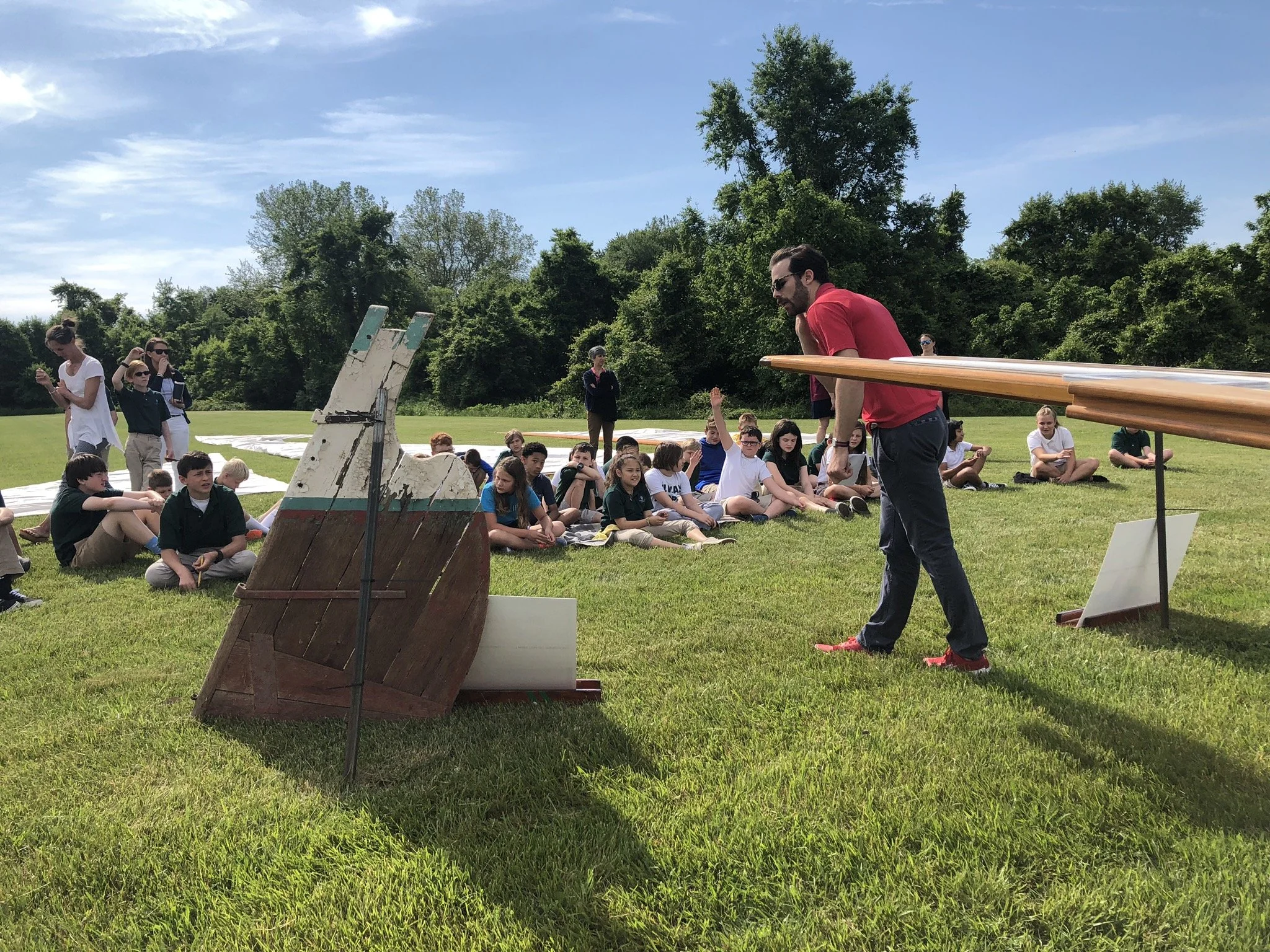Silver Heel: A Living History
Living HIstory Over a Century in the Making…
The story of the Silver Heel is a patchwork of confirmed fact and recollections, with a degree of uncertainty befitting any living artifact with a vibrant history stretching well over a century into the past. This much is certain: Silver Heel is a five log sailing canoe built in 1902 by Eugene Thompson of Kent County, Maryland. For over fifty years she has raced in the annual log canoe summer series under the sail number 2, but like many of her competitors, she spent her first decades working the oyster beds of the Chesapeake Bay. Despite her changing roles, the Heel has always been based on the Chester River—mostly out of Cliffs City on Quaker Neck. Her continuing evolution is a strong bridge to the history of this part of the Bay and those who have long sailed it.
1902 - 1930s: Working the Bay
Silver Heel is the second name of the boat that was originally called Maud in 1902 by her first owner, Captain Gustave Startt. Soon, however, ownership transferred to another waterman on Quaker Neck, Captain John W. Dickerson of Cliffs City, who rechristened his canoe to the name she still goes by today. According to the Chestertown Historical Society, there are two accounts of just why the new log canoe changed hands. One has Captain Dickerson exchanging his three-log canoe C. Russell for the larger Heel. Another details how the C. Russell was stolen from the creek behind Captain Dickerson’s home in Cliffs City, and so he purchased the Heel from Captain Startt as a replacement.
Captain John W. Dickerson of Cliffs City, Chestertown, MD renamed the canoe to Silver Heel.
Together with his two sons Philemon and Benjamin, Captain Dickerson sailed Silver Heel throughout the Bay, tonging for oysters from September to December and fishing from March to June. At the beginning of each season, the Heel towed a shanty boat with a 6 foot by 10 foot cabin aboard to what is now Hart-Miller Island, about 30 miles from her home port up the Chester. With the shallow draft and narrow beam common to all log canoes, Silver Heel lacked accommodations for her crew, so the shanty boat served as a temporary home for the long stretches of the season when the Dickerson men ranged far from Cliffs City.
Like many of his contemporaries in the Shore’s canoe fleet, Captain Dickerson eventually retrofitted Silver Heel with a gasoline engine. She was a workboat, and the considerable labor savings from not having to handle the masts and sails better allowed the Heel to compete with increasing competition from dredging boats like skipjacks and bugeyes. The date of the conversion is no longer known, but Captain Dickerson’s nephew, Joseph A. Dickerson, indicated in an interview with the Chestertown Historical Society that by the time the Heel switched to gas power, “most other operating canoes had already made the change.”
1930s - 1950s: Transition to Sail (and a Trip to the Bottom!)
Silver Heel’s tenure as a traditional working boat came to an end under her next owner, James C. Larrimore, when she was washed away and sunk in a storm—differing accounts point to either a hurricane in 1933 or a severe flood in 1935. For two decades, the Heel lay at the bottom of Island Creek off the Chester River in 10 to 15 feet of water. Rather than being lost to time, however, in 1955 she was discovered and raised by Clyde Thrift of Kings Town. Over the next two years, Mr. Thrift restored her hull and reconverted her to a sailing craft, fitting her with small masts appropriate for pleasure sailing. Having saved the Heel from a premature burial at sea, Mr. Thrift then sold the restored canoe to L. Kenly Jenkins of Rock Hall.
In this undated letter to the editor, L. Kenly Jenkins of Rock Hall wrote into the Kent County News with key details of Silver Heel’s history on (and under) the Chester River and Chesapeake Bay.
Although brought about by her sinking, Silver Heel’s transition from working boat to pleasure sailor mirrored a larger shift in the culture surrounding log canoes on the Chester River and throughout the Eastern Shore. A decade after Mr. Thrift had rescued and rebuilt the Heel, Mr. Jenkins wrote in a letter to the Kent County News that it was his belief that Mr. Thrift was one of only two “gentlemen left in this section of the Eastern Shore who have the knowledge and the natural ability for such a restoration.” Log canoes were no longer the ubiquitous workboats they were when the Heel was built a half century earlier, and as their traditional role faded into the past so too did the traditional techniques that had supported the fleet. Owning a log canoe was now an exercise in preservation, not just of the boat itself but also of a bygone era on Chesapeake Bay.
1961 - 2017: Racing in the Hewes Family
Robert and Janet Hewes, owners of Silver Heel for 55 years starting in 1961.
Part of the enduring appeal of the log canoe fleet is that, despite being inextricably tied to the past, they have never become floating museums representing a history frozen in time. The next stage of the story of the Silver Heel ensured that she would join this dynamic tradition.
Recently arrived in Chestertown in the late 1950s, Robert M. Hewes III had begun coveting the Heel by the early 1960s after visits to St. Michael’s. He asked Phil Dickerson—who had worked the Heel decades earlier with his father—to act as an agent to purchase the canoe from Mr. Jenkins. Although talks started well, Mr. Hewes recalled that he was perplexed when Mr. Dickerson began “acting funny” and suddenly cut off talks, seemingly bringing the purchase to a halt. The mystery was solved before long, however, when Janet Hewes—his wife—presented him with Silver Heel as a gift for his birthday on May 19, 1961. As it turned out, she had bought the Heel in secret, and Mr. Dickerson had decided to avoid Mr. Hewes altogether rather than risk spoiling the surprise.
Mr. Hewes quickly set about refitting Silver Heel in order to join the summer series of log canoe regattas held annually along the Eastern Shore. Captain Bubbsy Stevens—a waterman then in his 80s and the second “gentleman left in this section of the Eastern Shore” mentioned by Mr. Jenkins in his letter—made the necessary modifications, including tall box masts that Mr. Hewes would later recall were as “heavy as if they had been built from bricks.” In 1962 the Heel began to race against the rest of the remaining log canoe fleet, a representative of Kent County and Chester River tradition on a line dominated by Talbot County boats.
Silver Heel rejoins the fleet!
Through the 1960s and 1970s, racing Silver Heel came to be synonymous with summers for the Hewes family. With her full spread of sails and three 15-foot springboards, the Heel now required a crew of 10 to 12. All four of the Hewes children—Janet, Robert IV, Dana, and Donald—crewed for their father over the years, as did a number of cousins and an increasing number of family friends throughout the years (many of whom would later sail canoes of their own). Soon the Heel had a home regatta sailed on the Chester River, bringing the canoes north from the more traditional racecourses on the Miles, Tred Avon, and Choptank rivers. Hosted at the Hewes’ farm in Cliffs City, the Chester River Regatta became as much a social gathering as a sailing event, with Mrs. Hewes cooking dinner for all comers at the house. By Sunday morning, the lawn in front of Silver Heel’s boathouse was often littered with the tents of sailors, perhaps a bit worse for wear from Saturday evening’s exploits.
On the water, Silver Heel joined her competitors in striking a balance between preservation and development in order to find extra speed. Already fitted with foremast over 50 feet from her restoration, the Heel experimented with different sail configurations in her first decades of racing. In the first years of racing the Heel, this included a large squaresail hoisted to the top of the mainmast (and at times the foremast as well) on runs, which in those days would often be sailed with the wind directly aft and the sails wing-on-wing despite the instability of the taller rig. The squaresail eventually gave way to the more workable and efficient staysails that still feature on the Heel and throughout the fleet when sailing off the breeze. Like the rest of the fleet, Silver Heel fitted a topsail kite above the foresail in order to benefit from the fresh breeze above the trees lining the river shores.
Kites and squaresails: trying anything for more speed!
Of course, not all of the changes Mr. Hewes and the crew made to their historic canoe were for speed. The brilliant red squaresails gave no doubt as to where Silver Heel was on the course, nor did the red accents on the kite or staysails that remain to this day. By at least the summer of 1965 the crew had begun to match the running sails, wearing red to distinguish themselves amongst the fleet. As Mr. Hewes recalls, this came about when Hughey Naylor, son of one of his first crew members Mr. Bill Naylor, “went and bought the shirts at lunch time between races, and they came back and surprised the crew.” Showing the Heel crew’s penchant for bringing a bit of fun to the races, even under the hull was not spared from these stylistic cues. Mr. Hewes was surprised one summer to see the words “Keep’er Heeled” appear painted below the waterline when his canoe heeled. When she capsized, the full extent of the modifications became clear, with the words, “Oops too far,” painted on the bottom. The crew had kept the extent of their hijinks secret from their skipper, who today recalls simply, “We tipped over, and I found out about it.”
The crew’s handiwork and penchant for mischief was on full display on the race course.
At the age of 60 and after 20 years at the helm, Mr. Hewes turned the tiller over to his youngest son Donald in 1982. Mr. Peter Esslinger, a member of the crew since 1976, became skipper in 1985 and would helm the Heel for over 25 years, fostering several generations of crewmembers in the process. By the early 2000s, these included a third generation of Hewes sailors, as Mr. and Mrs. Hewes’ grandchildren started to sail the log canoe they had always watched–and heard legends of–while growing up.
As demonstrated in this image from the 1980s, Silver Heel becamed a hive of activity whenever the crew was rigging and derigging.
In the offseason of 2000 to 2001, Silver Heel underwent her biggest refit since Mr. Thrift raised her in 1955. In an attempt to make the notoriously tippy Heel more stable, Tad DuPont and Jimmy Wilson made modifications to the outside of the hull and lowered the deck of the Heel by several inches. According to Andrew Geffken, Mr. Wilson had such a good feel for what the lines should become that he cut the deck off of the Heel with a chainsaw and only his eyes as a guide. With the Heel’s centennial celebration just a year away (an occasion naturally celebrated with a party for the fleet on the Hewes’ farm in Cliffs City), the old canoe was entering yet another phase in her story.
Mr. Esslinger would remain skipper until he passed away in 2014—only after he had helmed the Heel to her first Governor’s Cup victory in 2010. Over almost 40 years, Mr. Esslinger, or “Pete” to everyone on the crew for decades, had left an indelible stamp on Silver Heel and the log canoe fleet. Today he is remembered with the Peter Esslinger Memorial Trophy, awarded to the winner of the first race of the Chester River Regatta, historically based off the Hewes’ home dock in Cliffs City. Noted log canoe painter Marc Castelli, of Chestertown, accepted the commission to paint the Esslinger Trophy, which depicts Pete at the helm in his preferred leeward position, enjoying every moment with his crew.
With Mr. Esslinger’s passing, leadership was taken up full-time in 2014 by Mr. and Mrs. Hewes’ grandchildren. Two of the Hewes grandchildren, Berry and Max Kurland, shared skipper duties, while a third, Pierce Hewes, shared leadership both on and off the water. In 2007, they had begun to take charge of the Heel in regattas she normally wouldn’t sail, helping to ease the transition into this new role.
Mr. Hewes continued to follow almost every race from the Heel’s chase boat, Yetsgo, well into his 90s. By the time of his passing in 2017 at age 95, three generations of his and Mrs. Hewes’ family–including eight grandchildren–had joined countless crew over 55 years of their ownership. Many crewmembers have spent (and continue to spend) decades aboard Heel, members of a unique and ever growing family of log canoe sailors linking present to past.
2017 and Beyond: Living History
SHF partners with local schools and community groups to teach the living history of Silver Heel and log canoes - from workboats to racing on the Eastern Shore!
Over more than a century, Silver Heel has become a part of the fabric of Eastern Shore heritage. In 2017, the Silver Heel Foundation took over stewardship of Silver Heel. Now an all-volunteer effort led by the dedicated crew who have become the Silver Heel family, her latest custodians hope to keep her part of that heritage for many years to come.
The Foundation was established with three guiding principles: preservation, sailing, and community. SHF’s volunteers spend hundreds of hours each year to maintain the 123-year-old Silver Heel, ensuring she remains in sailing condition. On-the-water, Silver Heel continues to compete each summer in the annual High Point Series held on the Chester, Miles, Tred Avon, and Choptank Rivers - carrying forward a racing tradition that dates to the 1850s.
Off the water, SHF works to share the heritage of log canoes by partnering with local schools and community groups, supporting local artists, and participating in festivals and public events. Together, these efforts help keep Silver Heel and the unique spirit of the Eastern Shore alive for generations to come.








